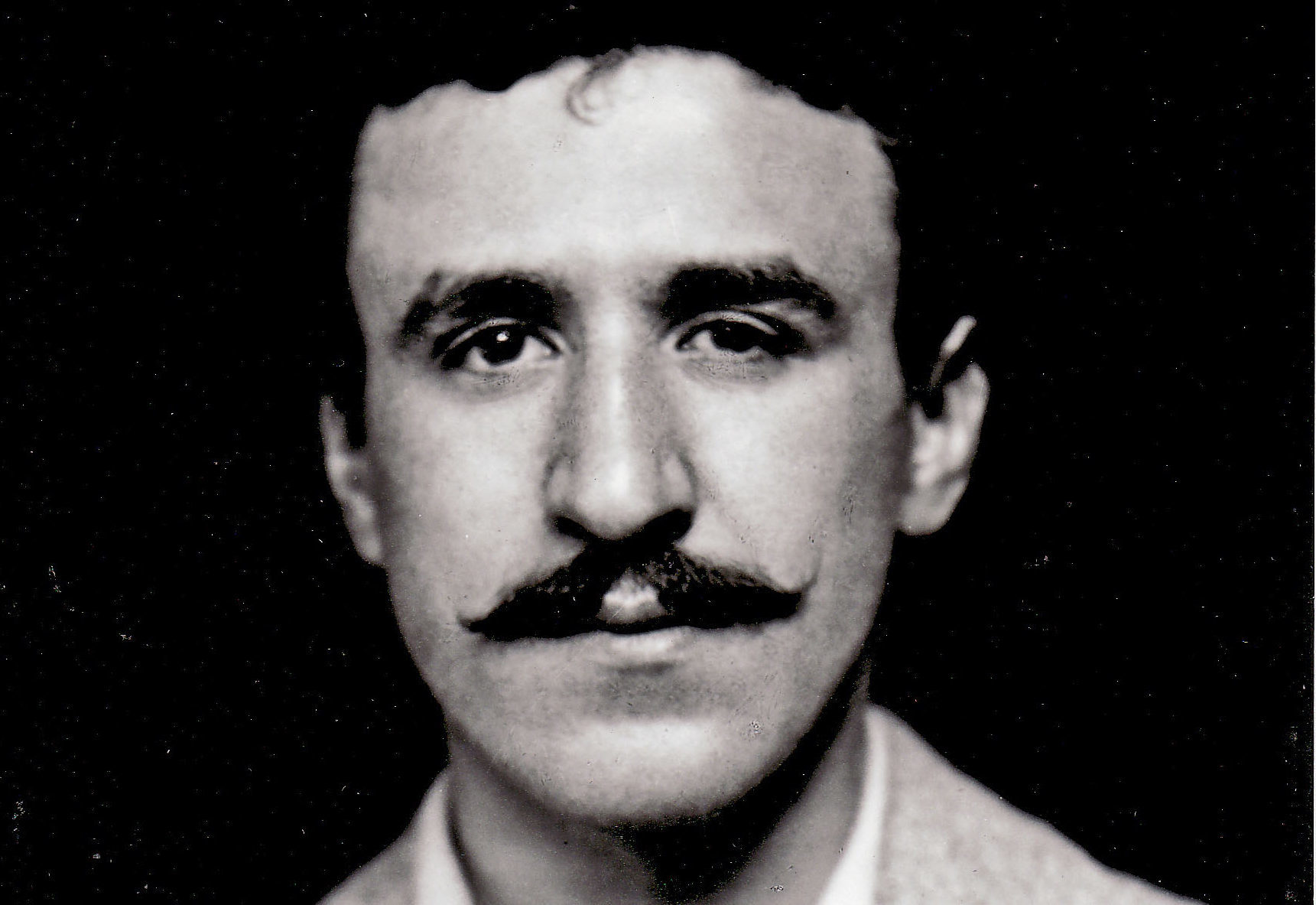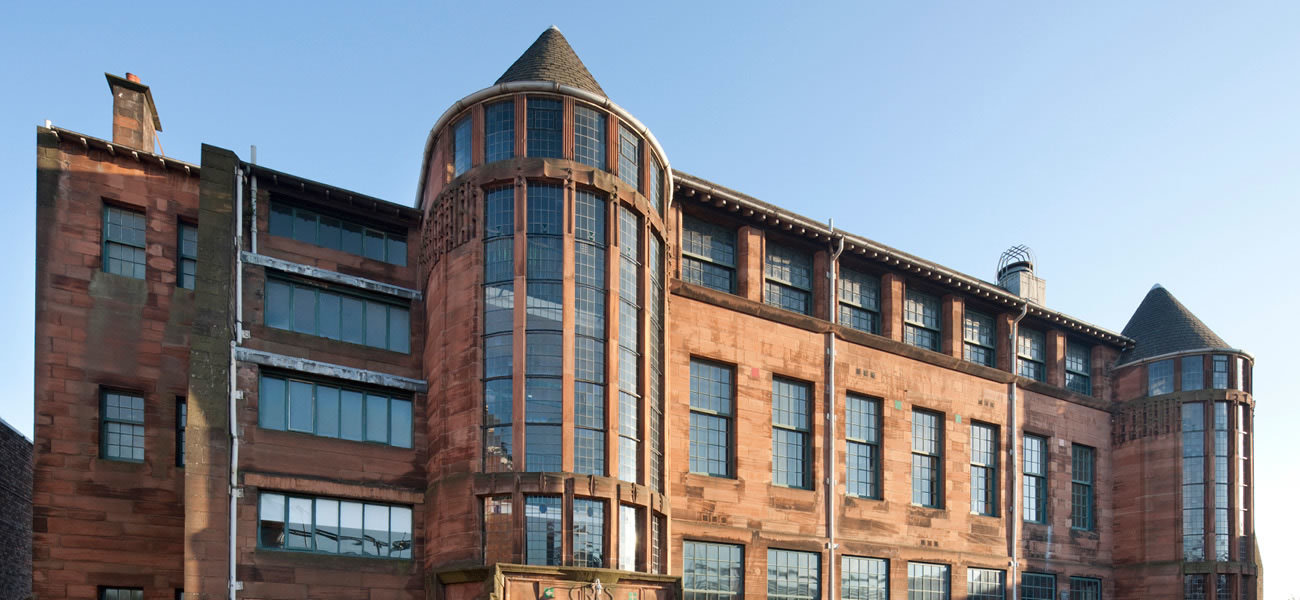
SCOTLAND’S most famous architect and designer, Charles Rennie Mackintosh, was born on this day in 1868.
Best known for his work in designing Glasgow’s School of Art and The Willow Tearooms, he is regarded to this day as the father of Glasgow Style.
His design work spanned from architecture, interior design, furniture and metalwork, to the odd watercolour painting or two.
Glasgow-born Charles Rennie Mackintosh was born #otd in 1868?? . Although best known as an architect and designer, Mackintosh also produced a large number of drawings and watercolours, including this, The Road Through the Rocks, Port Vendres: https://t.co/6pFWa1Bv7h pic.twitter.com/iOKtOQdEO0
— National Galleries (@NatGalleriesSco) June 7, 2018
The 150th anniversary of his birth is being celebrated with a number of events and special projects today and across the whole year.
An exhibition is running at Kelvingrove Museum until August based around the Glasgow Style and Mackintosh’s work.
Also, The Willow Tea Rooms on Sauchiehall Street are currently being restored ahead of re-opening to the public in July.
In September, one of the first exhibitions at the new V&A Dundee will be a reconstruction of his famous Ingram Street Tearooms.
And the seventh annual Mackintosh festival takes place in October.
For more information on Mackintosh 150 events, visit https://peoplemakeglasgow.com/things-to-do/mackintosh/mackintosh-150
Happy 150th birthday, Charles Rennie Mackintosh ??
We can't wait for you all to see the Oak Room in September at the ❤️ of our Scottish Design Galleries.
For now, here's a mysterious birthday peek of it during its conservation journey. Ssh ? it's a secret!#Mackintosh150 pic.twitter.com/ItHYPafUae
— V&A Dundee (@VADundee) June 7, 2018
Willow Tea Rooms welcome first guests after restoration
The cladding came off the restored Mackintosh Willow Tea Rooms on Sauchiehall Street last night. Looking very dapper this morning, Glasgow. #mackintosh150 pic.twitter.com/dSS3ndRA1S
— Paul English (@PaulEnglishhack) June 7, 2018
By Paul Ward
The original Willow Tea Rooms building has welcomed its first guests since a £10 million restoration on the 150th anniversary of its designer Charles Rennie Mackintosh.
The original Glasgow business opened in 1903 and remains of international significance as the only building where Mackintosh had total control over the architecture and interior decorations, including the design of furniture, cutlery and the waitress’s uniforms.
The 200-seat restaurant and tea rooms, now known as Mackintosh at The Willow, has undergone a £10 million restoration and will open to the public later this year but guests, including elderly members of Garnethill community centre, will take tea in the restaurant on Thursday to mark Mackintosh’s anniversary.
Other guests include people who contributed to the restoration, Heritage Lottery Fund (HLF) deputy chair Dame Seona Reid and Glasgow Lord Provost Eva Bolander.
The Willow Tea Rooms Trust described the restored building as a “living, breathing museum”.
Trust chair Celia Sinclair said: “It is fitting that some of our first guests should be from the local community centre.
“It has always been our aim for the building to be used for the good of the people of Glasgow.
“The tea rooms, visitor centre and learning and education suite are an integral part of the aims and objectives of the trust to educate and inspire and restore and preserve this iconic piece of Glasgow’s heritage.”
Marcus Kenyon, chief executive of Mackintosh at the Willow, said: “We are delighted to welcome our first guests to 217 Sauchiehall Street.
“They have had a sneak preview of the interior and we have had a dress rehearsal for our full opening in September 2018.”
Dame Seona said: “Charles Rennie Mackintosh left Scotland with a wonderfully rich heritage and a distinguished place on the world’s architecture and design stage.
“Thanks to players of the National Lottery, HLF has been able to support many projects which restore and celebrate his achievements and it is particularly exciting to see the original Willow Tea Rooms building come back to life so that afternoon tea can once again be enjoyed as he, and Miss Cranston, first intended.”
The Honest Truth
Earlier this year, Margaret Stewart, an architectural history lecturer at the University of Edinburgh, told The Sunday Post’s Laura Smith the Honest Truth about one of the most innovative architects of the 20th Century.
What made Mackintosh so iconic?
His style is very distinctive. He is one of the few architects with his own style name. All students of architecture are taught about Mackintosh and Glasgow Style.
How would you describe that style?
He is best known for his white rooms – in place of the heavy upholstery and dark wood interiors of the Victorian period he introduced uncluttered white rooms, with touches of coloured glass, high back chairs and flowing lines. However, his style went on developing and he experimented with dark walls and more geometric shapes.
Who were “The Glasgow Four”?
In 1900 Mackintosh married Margaret Macdonald, and his friend Herbert McNair married her sister Frances Macdonald.
They were all students at Glasgow School of Art and were introduced by the headmaster. They became known as The Glasgow Four and developed some of the most exciting art of the period in the UK.
Was his work ahead of its time?
Mackintosh’s designing was regarded as innovative and probably too challenging for some of the more traditional architects working in Scotland, so he did receive criticism. However, in Vienna he was described as the architect who had “shown us the way” to the new style.
Where can we find his most famous work?
We are fortunate to have most of it here in Scotland. Glasgow School of Art is his masterpiece.
There’s also the Queen’s Cross Church (home of the Charles Rennie Mackintosh Society), Scotland Street School and the Willow Tea Rooms on Sauchiehall Street.
Have you discovered any unusual facts about Mackintosh?
If you would like to acquire a genuine Mackintosh, look out for the book cover designs he made for Blackie, the Glasgow publisher. These can still be found in secondhand bookshops.

Is it true he was once arrested as a German spy?
Yes. At the outbreak of the First World War, he and Margaret visited Walberswick in Suffolk.
His Scots accent, strange form of dress (he wore a long Inverness cape), and his letters arriving at the post office with German postmarks, lead locals to believe he was a German spy, and he was put under house arrest. Later all charges were dropped but Mackintosh was greatly upset and never returned there.
What happened to Mackintosh later in life?
In 1913, Mackintosh and Margaret moved to England but from 1923 architectural commissions dwindled. They were living between London and the south of France, where he focused on landscape painting. While in France, he fell ill with cancer. He died in London in 1928.
How important has his contribution been to Glasgow?
It’s immeasurable. Mackintosh embodies so much of the spirit of the great city – innovative, art-loving, dynamic, experimental and humane.
How will the anniversary be celebrated?
Kelvingrove Art Gallery and Museum, the Charles Rennie Mackintosh Society, Hunterian Mackintosh Collection and National Trust for Scotland are all planning a range of exciting events and exhibitions. The Willow Tea Rooms will reopen in June following a £10 million renovation programme.
Edinburgh-based Craft Design House has also commissioned Mackintosh-inspired work by various Scottish designers for its Reflecting Mackintosh range, available from museum, heritage and cultural centre gift shops.

Enjoy the convenience of having The Sunday Post delivered as a digital ePaper straight to your smartphone, tablet or computer.
Subscribe for only £5.49 a month and enjoy all the benefits of the printed paper as a digital replica.
Subscribe